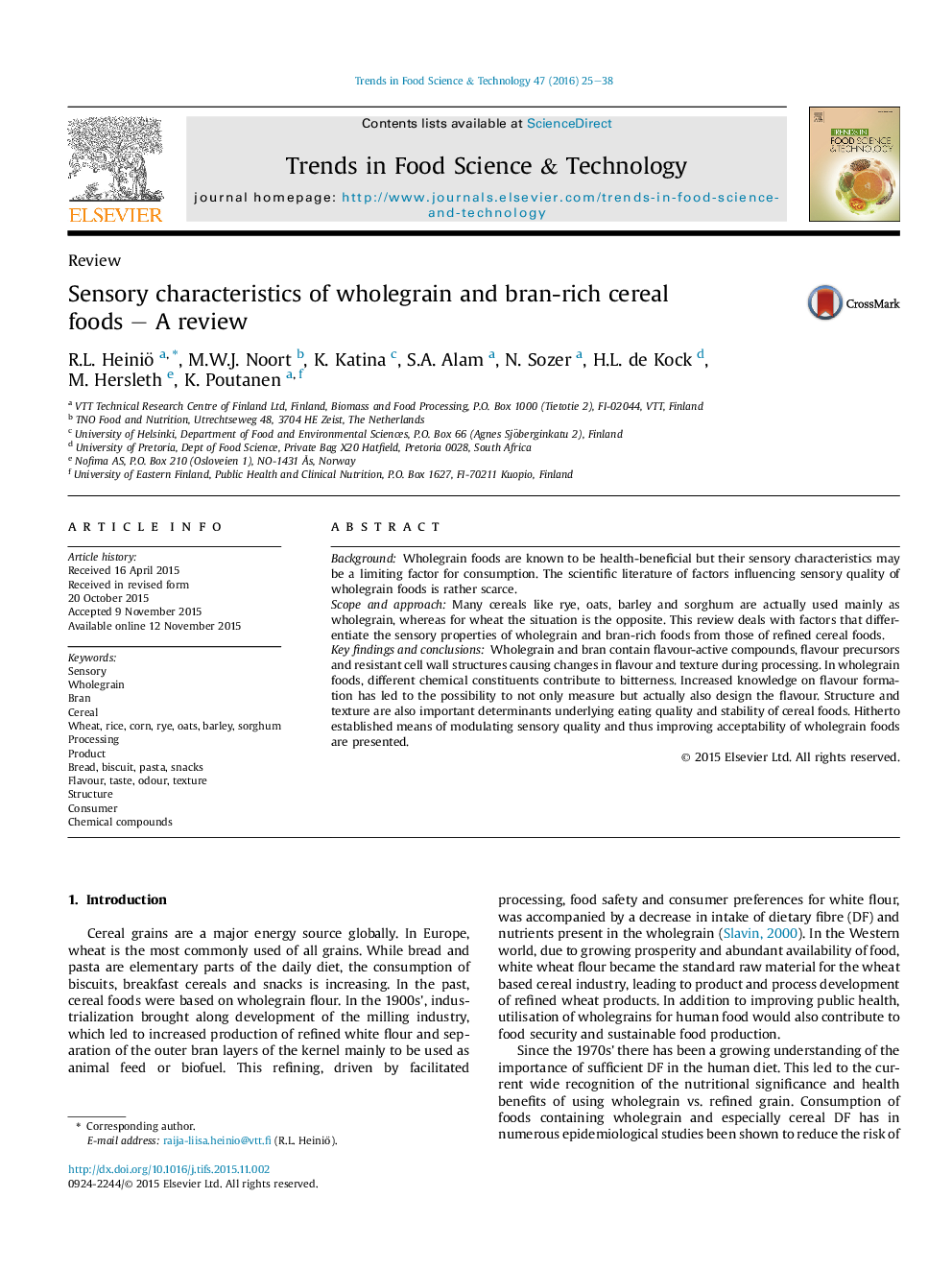| Article ID | Journal | Published Year | Pages | File Type |
|---|---|---|---|---|
| 2098566 | Trends in Food Science & Technology | 2016 | 14 Pages |
•Most sensory attributes of wholegrain foods are formed during processing.•Phenolics, peptides, Maillard reaction products and lipids are major compounds determining the flavour of wholegrain foods.•Bran particle size, surface interactions and water binding are key factors in affecting texture formation.•Milling, fractionation, bioprocessing, choice of raw materials tools to improve sensory characteristics of wholegrain foods.
BackgroundWholegrain foods are known to be health-beneficial but their sensory characteristics may be a limiting factor for consumption. The scientific literature of factors influencing sensory quality of wholegrain foods is rather scarce.Scope and approachMany cereals like rye, oats, barley and sorghum are actually used mainly as wholegrain, whereas for wheat the situation is the opposite. This review deals with factors that differentiate the sensory properties of wholegrain and bran-rich foods from those of refined cereal foods.Key findings and conclusionsWholegrain and bran contain flavour-active compounds, flavour precursors and resistant cell wall structures causing changes in flavour and texture during processing. In wholegrain foods, different chemical constituents contribute to bitterness. Increased knowledge on flavour formation has led to the possibility to not only measure but actually also design the flavour. Structure and texture are also important determinants underlying eating quality and stability of cereal foods. Hitherto established means of modulating sensory quality and thus improving acceptability of wholegrain foods are presented.
